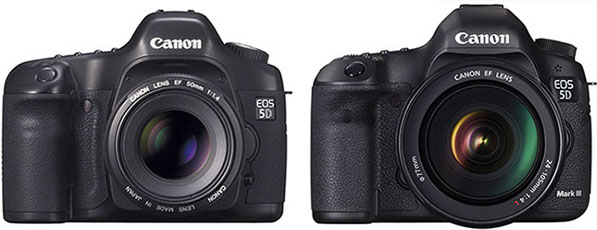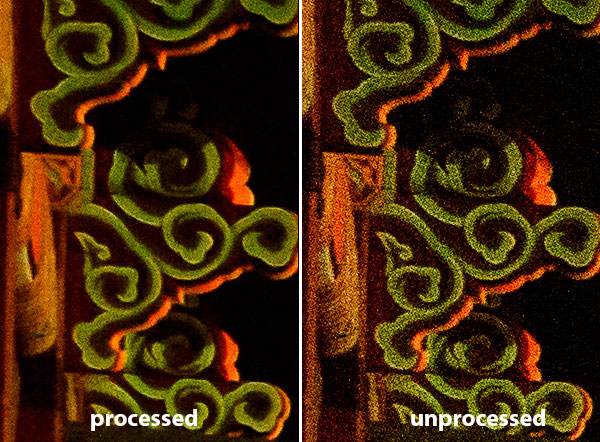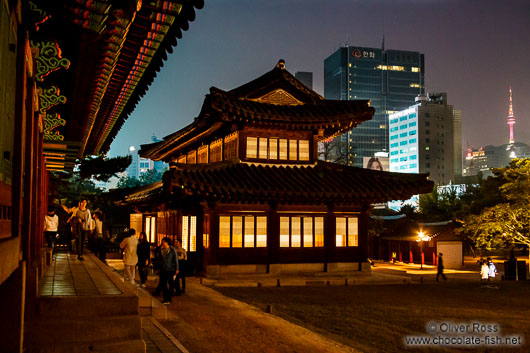After over 6 years of service, I recently retired my EOS 5D and replaced it with the 5D Mark III. The Mark II never appealed to me, since I did not consider the new features worth the investment but when the Mark III came along, I decided to finally upgrade. You can check out the specs of the Mark III here.
-

The Canon EOS 5D and 5D Mark III
I received a number of emails asking whether the Mark III is worth the price tag of currently about €3,000 so I decided to share some of my impressions here since I already had the opportunity to test the camera for a few months now. This will neither be a very technical nor a very systematic review, as there are plenty of those out there already. It is merely a comparison between the Mark I and Mark III, from the perspective of a travel photographer who has more than 6 years experience with the Mark I.
While the original Canon 5D Mark I was certainly a good camera, it had its limitations, especially in low light photography. It produced usable images with acceptable noise levels for ISO speeds up to about 1250 but for higher settings the images would become very grainy and noise was very apparent. The new Mark III has a standard ISO range from 100-25,600 which can be extended to a whopping 102,400. While this sounds very impressive, I was very sceptical in the beginning but after using the camera in a wide range of light environments now, I have to say that I am very impressed by the quality it delivers.
The shot below was taken in a palace compound in Seoul which was very dimly lit.
Apart from this being a rather impressive example of image stabilisation on the part of the Canon 28-135 IS lens, the shot also shows very little noise, especially after applying some noise reduction in Adobe Lightroom as can be seen on the 100% crops below.

100% crops
The image on the right shows the image as it came out of the camera. Noise is apparent. The image on the left shows the processed image with luminance noise reduction set to 50% in Adobe Lightroom. While the loss of detail is unavoidable, the noise is reduced to very acceptable levels.
Other features that make my life as travel photographer much easier are and which I would like to mention are:
- Auto-ISO setting: It is possible for the camera to automatically select the best ISO speed for the current light conditions. I tend to photograph mostly in aperture priority which means that I choose the aperture and let the camera calculate the correct exposure time for the available light. In the auto-ISO setting the camera also adjusts the ISO setting to the ambient light level. If there is not enough light available to produce an unshaken hand-held image, the ISO value is increase. The user can set both the ISO range that the camera is allowed to choose from and also the exposure time which is still considered “safe” for handheld shooting (for the given focal length). This feature is very handy if you frequently move between contrasting light environments such as dimly lit churches and the sunny courtyards outside.
- LCD screen: Something that always bothered me on the 5d Mark I was the poor LCD screen. Especially in bright daylight, it was almost impossible to discern any detail from the LCD screen. In comparison, the new 1 mega-dot LCD screen of the Mark III provides crystal-clear previews of the images, even under direct sunlight.
- Dual CF/SD card slots: While the Mark I only has 1 slot for a compact flash memory card, the Mark III features 2 slots which allow you to also use an SD memory card. Since most laptops have an SD card reader built in, having this option available saves you having to carry a CF card reader and although a saving of 150g might seem like very little, every little helps when you are lugging some 5kg worth of gear up the next mountain pass.
- Live view feature: While this was already introduced in the Mark II, it was new for me as I had skipped a generation. The live view feature allows you to view the image on the LCD screen before taking the shot. Although I use it very rarely (as it complicates focusing), it comes in handy when you have to place the camera in awkward positions like at floor level or high above some fence that obstructs an otherwise clear shot.
- Automatic sensor cleaning: This refers to the feature where the camera automatically cleans its image sensor every time it is switched on or off, removing any small dust particles which might have entered when you changed a lens, leaving ugly black spots on your photographs. While this is standard now even in most consumer level SLR cameras, it was not available in the EOS 5D Mark I. As I change lenses very often, sometimes in windy, dusty, or even rainy conditions, this is a very good feature to have. So far I have not had a single image with a dust spec on it which saves a lot of work in post processing.
- HD movie mode: This is a feature which I use very rarely (mainly because I often forget that I have it) but it certainly adds another degree of creative freedom and allows you to explore another photographic dimension. The quality of the movies is certainly very impressive and if you add some not-so-standard movie lenses like fisheyes, macros, or very large aperture primes, it is possible to produce some very satisfying results.
Overall I have to say that I am very happy with this camera (and I am not paid to say this) and although it comes at a price, I feel that the investment was worth it as I will be happy with this camera for at least another 5-6 years again.

 Subscribe to feed
Subscribe to feed
![[del.icio.us]](https://www.chocolate-fish.net/blog/wp-content/plugins/bookmarkify/delicious.png)
![[Facebook]](https://www.chocolate-fish.net/blog/wp-content/plugins/bookmarkify/facebook.png)
![[Google]](https://www.chocolate-fish.net/blog/wp-content/plugins/bookmarkify/google.png)
![[LinkedIn]](https://www.chocolate-fish.net/blog/wp-content/plugins/bookmarkify/linkedin.png)
![[Mister Wong]](https://www.chocolate-fish.net/blog/wp-content/plugins/bookmarkify/misterwong.png)
![[StumbleUpon]](https://www.chocolate-fish.net/blog/wp-content/plugins/bookmarkify/stumbleupon.png)
![[Technorati]](https://www.chocolate-fish.net/blog/wp-content/plugins/bookmarkify/technorati.png)
![[Twitter]](https://www.chocolate-fish.net/blog/wp-content/plugins/bookmarkify/twitter.png)
![[Email]](https://www.chocolate-fish.net/blog/wp-content/plugins/bookmarkify/email.png)

Thanks for this. How do you rate the image quality? Did you see any difference?
@Pete
The image quality is superior on the Mark III, especially since you have about 22MP on the Mark III compared to only about 12MP on the Mark I.